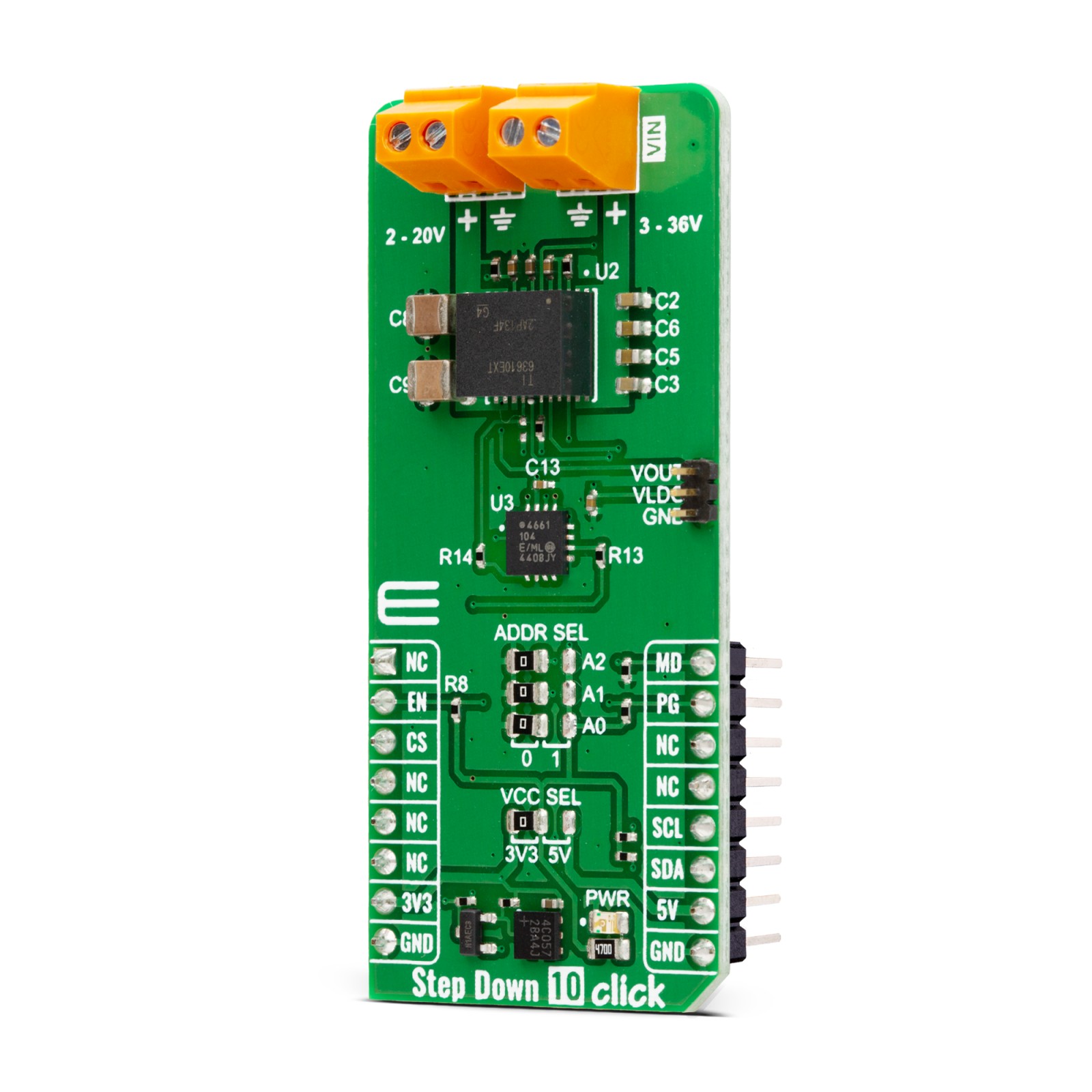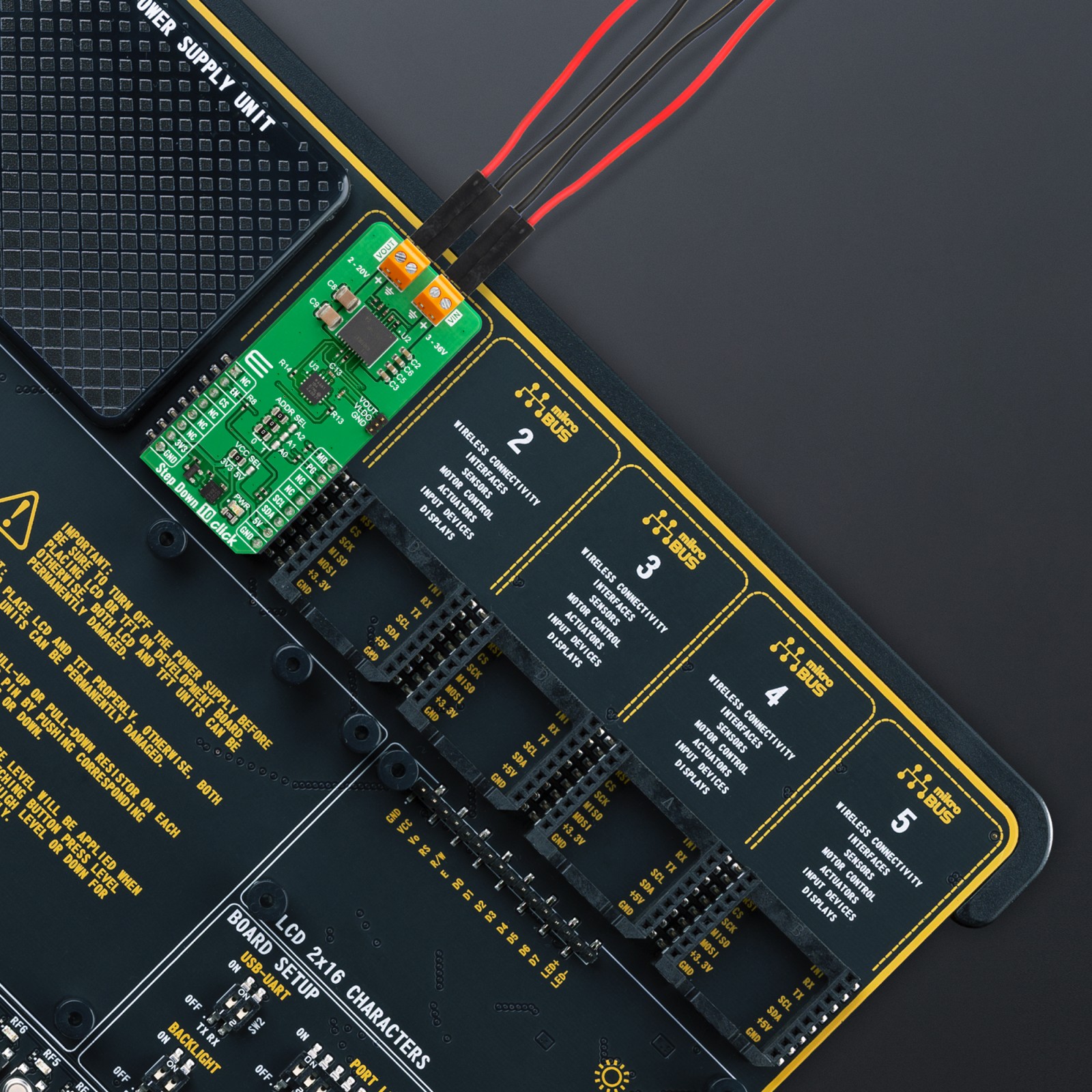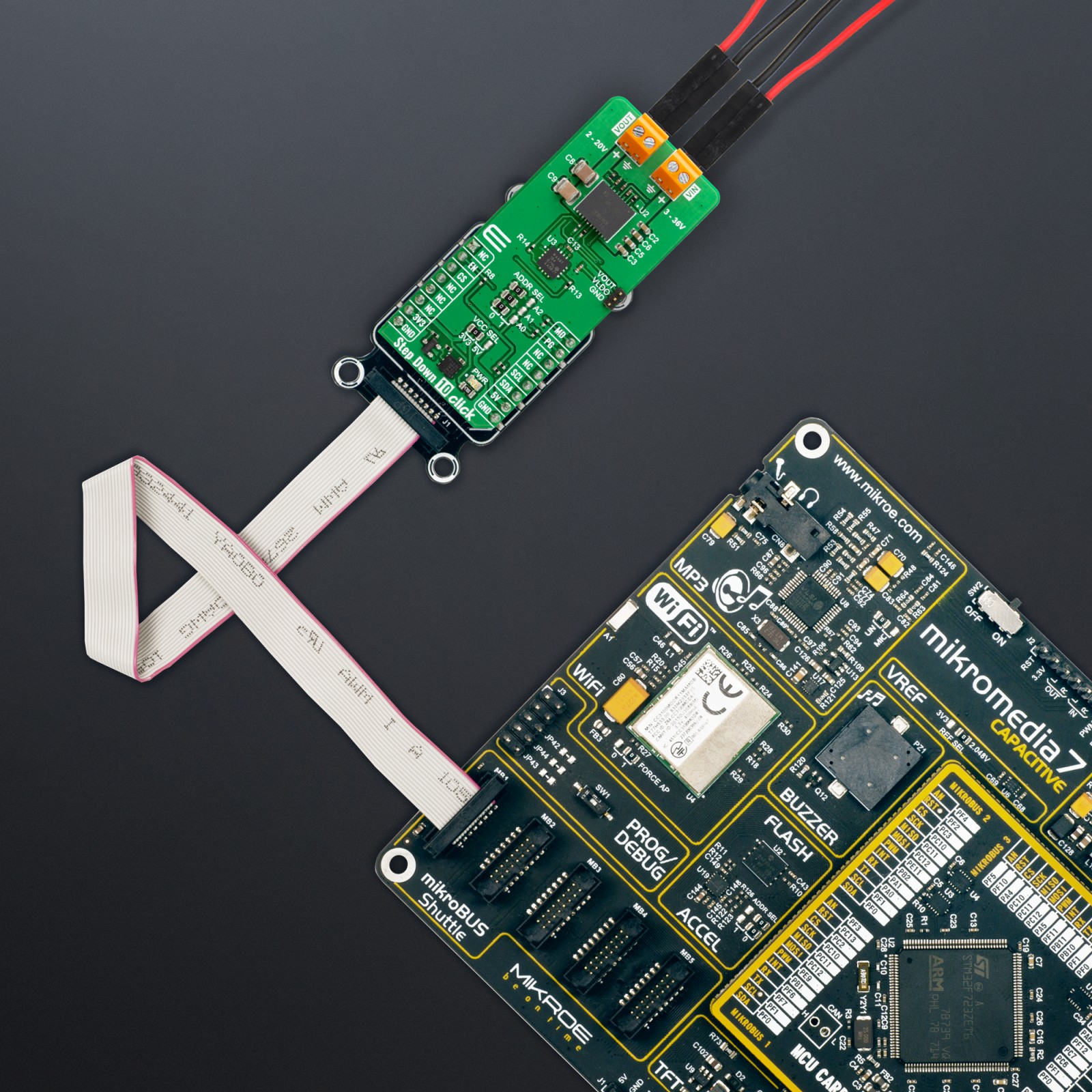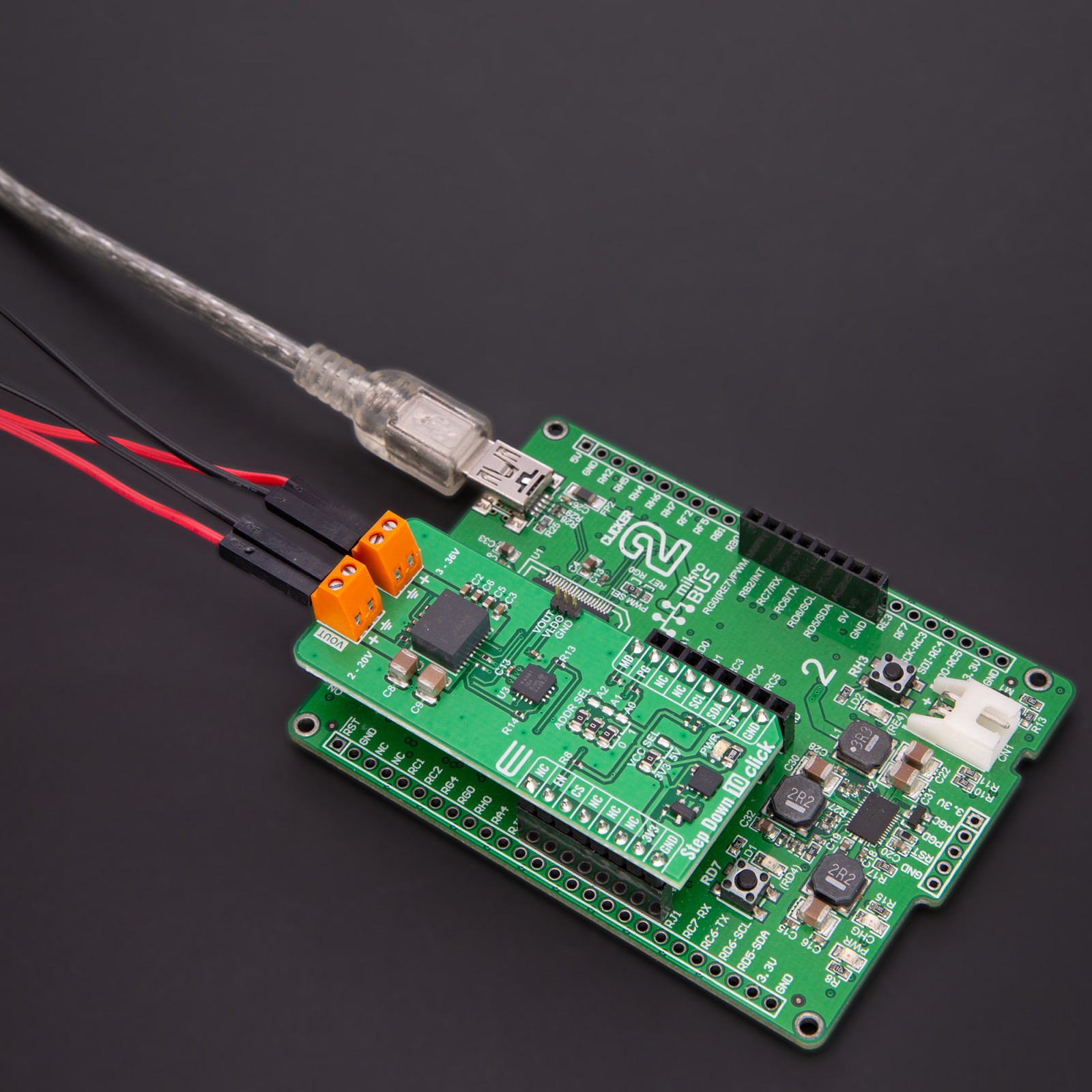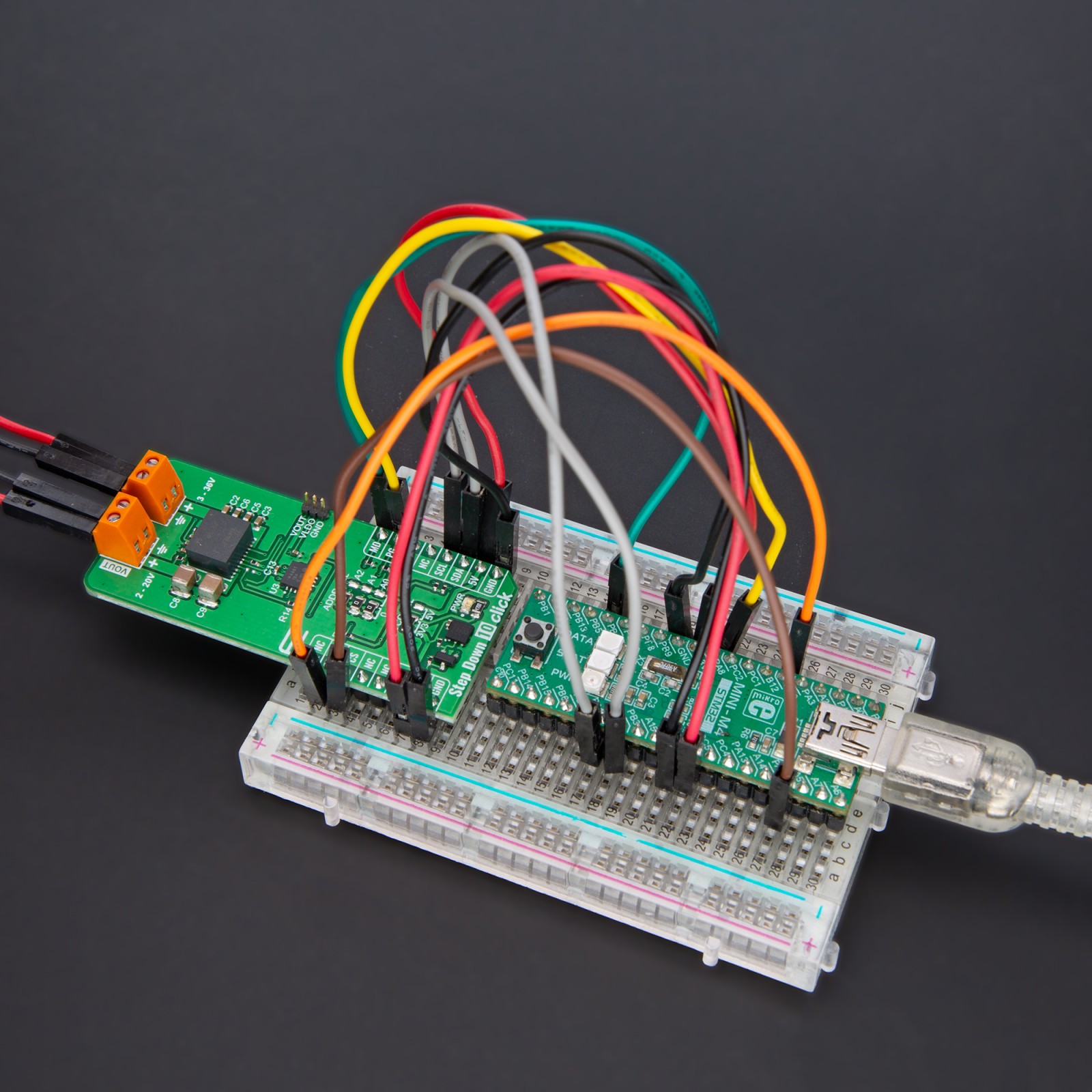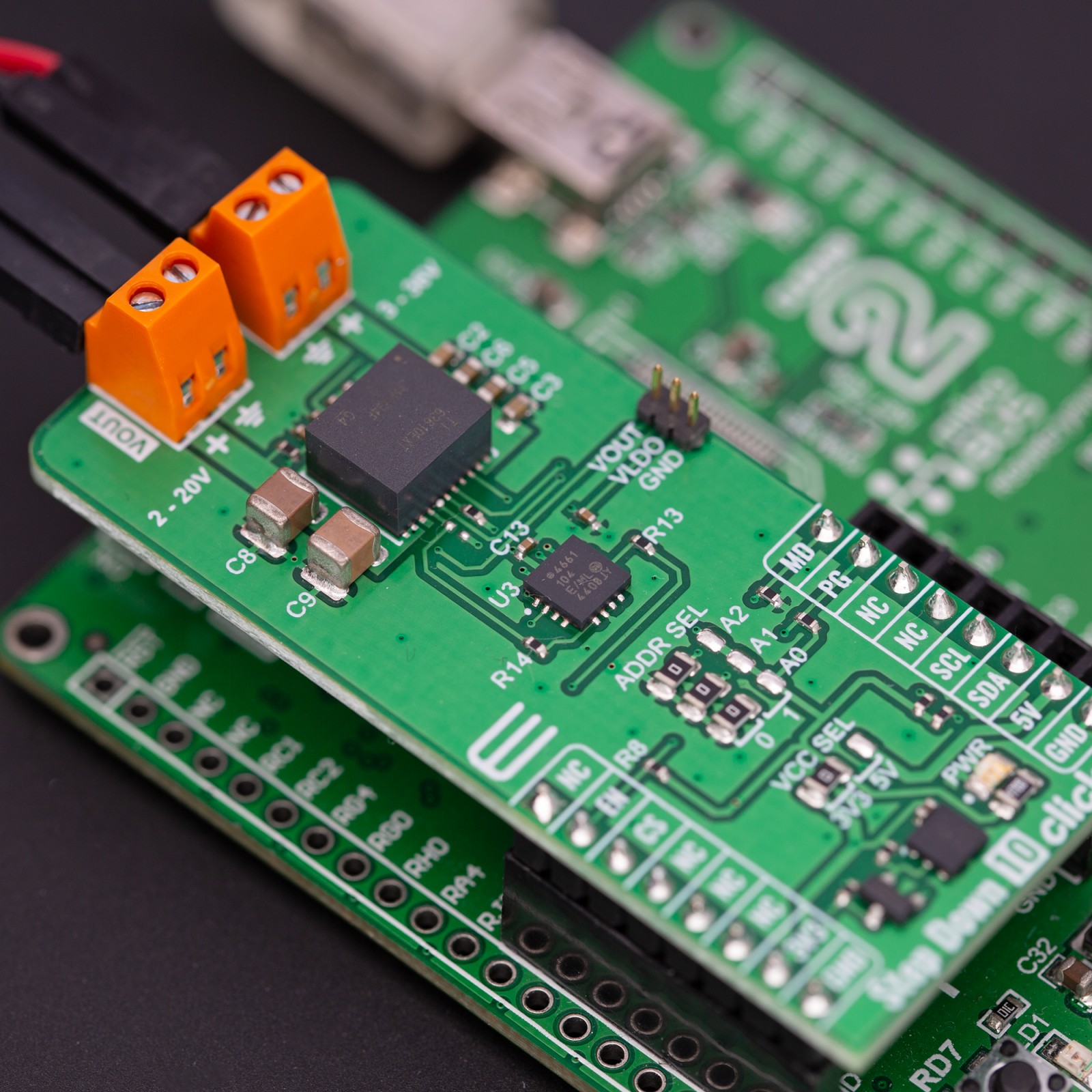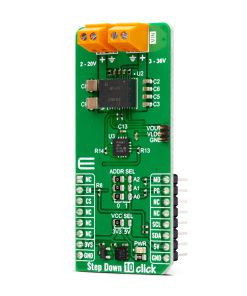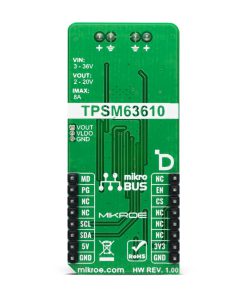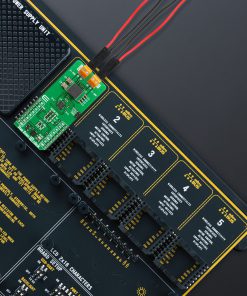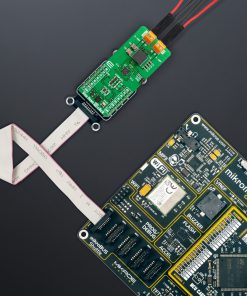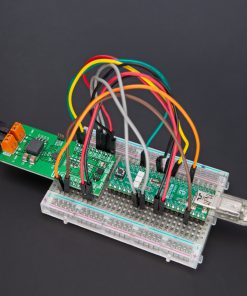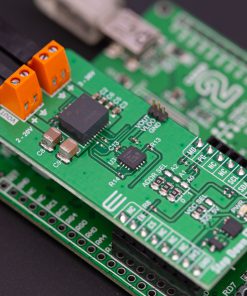Step Down 10 Click is a compact add-on board that converts higher voltages into a lower voltage level. This board features the TPSM63610, a high-density synchronous buck DC/DC power module with enhanced HotRodTM from Texas Instruments. It is a highly integrated DC/DC solution that combines power MOSFETs, a shielded inductor, and passives. It uses voltages from 3V up to 36V as an input voltage to step it down from 2V up to 20V as an adjustable output with up to 8A of current. This Click board™ makes the perfect solution for the development of test and measurement devices, factory automation and control, buck and inverting buck-boost power supplies, and more.
Step Down 10 Click is fully compatible with the mikroBUS™ socket and can be used on any host system supporting the mikroBUS™ standard. It comes with the mikroSDK open-source libraries, offering unparalleled flexibility for evaluation and customization. What sets this Click board™ apart is the groundbreaking ClickID feature, enabling your host system to seamlessly and automatically detect and identify this add-on board.
 tRF Click
1 × R1,050.00
tRF Click
1 × R1,050.00  Alcohol 3 Click
1 × R700.00
Alcohol 3 Click
1 × R700.00  GSM-GPS Click
1 × R1,300.00
GSM-GPS Click
1 × R1,300.00  RTC Click
1 × R385.00
RTC Click
1 × R385.00 

